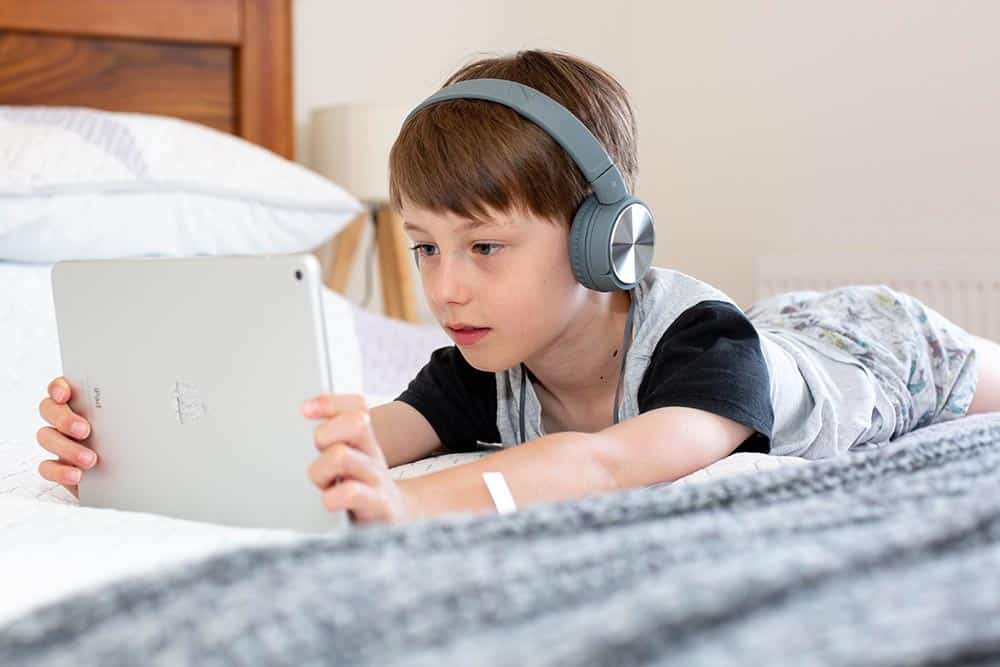Another important feature of the app is that George Canine presents the information at a suitable pace for young students; that is, much slower than the delivery pace in other literacy apps. This is important because there is strong evidence to suggest that children remember new information better when it is presented at a slower, more appropriate pace.
Humans learn by actively thinking about new information, and young children need lots of time to do this, especially when they are trying to retrieve answers to questions. Hence, George Canine’s pace is perfectly pitched to his young audience.
Similarly, the human information processing faculty slows down when novel material is being assimilated. This is because memory works by combining new information with its associated older information – a process that takes time. For this reason, George Canine’s slower delivery is equally well paced for older people who want to reach reading proficiency.
George’s speech is cool and slow, to ensure that real learning can flow.
Aside from the slower paced content delivery, successful kindergarten teachers, like George Canine, speak slowly when they teach new information. As cognitive specialists, they know that children learn best when you speak to them in their language. That means: use slower, speech if you want them to learn. A slower speech rate also confers on George the time he needs to emphasise the key learning stimuli.
There is abundant evidence to show that when teaching young children new material, a slower speech rate is much more appropriate than a normal speech rate. The finding that slower speech is more effective for learning new information is true for normally developing children and children with language difficulties. Once again, the George Canine app honours this research.
The speech rate in George Canine Learn to Read & Write on Time has been slowed slightly so that children can process the new ideas that George delivers. In other words, George speaks particularly slowly so that children can understand and give meaning to the new information. In effect, the slower speech rate allows children to process and retain the information. George’s speech rate also means that he can emphasise the key stimuli to be learned, and at the same time, he gives young learners the time that they need to think about the information. It is this wider window of time that enables learners to efficiently retain the information.
In a nutshell, George’s slower speech rate and his slow paced delivery give children time to process, understand and thereby learn the new information. And, they need the time because among other things, children’s cognitive processing speed is relatively slow; much slower than that of teenagers, for example.
Cognitive processing speed refers to the speed at which people think while paying attention to a task. That is, the speed at people encode information. Young children have a slower processing speed rate than older children and teenagers. This imporatnt cognitive factor is taken into account in the George Canine design.
Why are young children’s processing speeds significantly slower than those of teenagers and adults? Younger children have fewer mental resources available for processing new information simply because their brains are immature. In the same way that they need time to grow physically, they need time to mature their processing speed.
To illustrate, George teaches phonics by explaining that the letter a “says ah, like in ah…pple.” For most young children, this information is entirely new: First, they must hook onto the idea that speech can be broken up into sounds, like the ah in apple. Second, they must process the fact that the a has a name (“a”), and third, that the letter stands for the speech sound, ah.
Most pre-literate children have never encountered the concept that a particular shape, in this case, a, has a name and, moreover, an associated sound that George makes evident. So, George speaks at a pace that allows children the time that they need to understand this revelation. Such understanding facilitates the processing of the new information. So, the appropriately paced speech rate allows young children to appropriately process or encode novel information. The efficient encoding enables them in turn to orient and embed the new information within their skills set. Once this occurs, learning takes place.
It is therefore not surprising that the George Canine app takes cognisance of the fact that young children have a slower processing speed than older children, adults and teenagers. As they mature, young learners’ processing speeds naturally increase until they reach their late teens. At that point, their cognitive function is equal to that of adults. This is equivalent to the way that their bodies noticeably grow with age and then stop growing in their late teens or early adult years.
In sum, because it is appropriately paced, Kindergarten children have time to process the new material, and they’re given the time that they need to understand George’s language of instruction. These are just two aspects of the app that enable the new content to be absorbed; that is, processed and remembered.
Jennifer Smith has thought it through, carefully and without much ado. She knows how critical cognitive factors are and she wants the learning to go far. She’s kept the app cool and kept it slow, because that’s what enables learning to flow.

